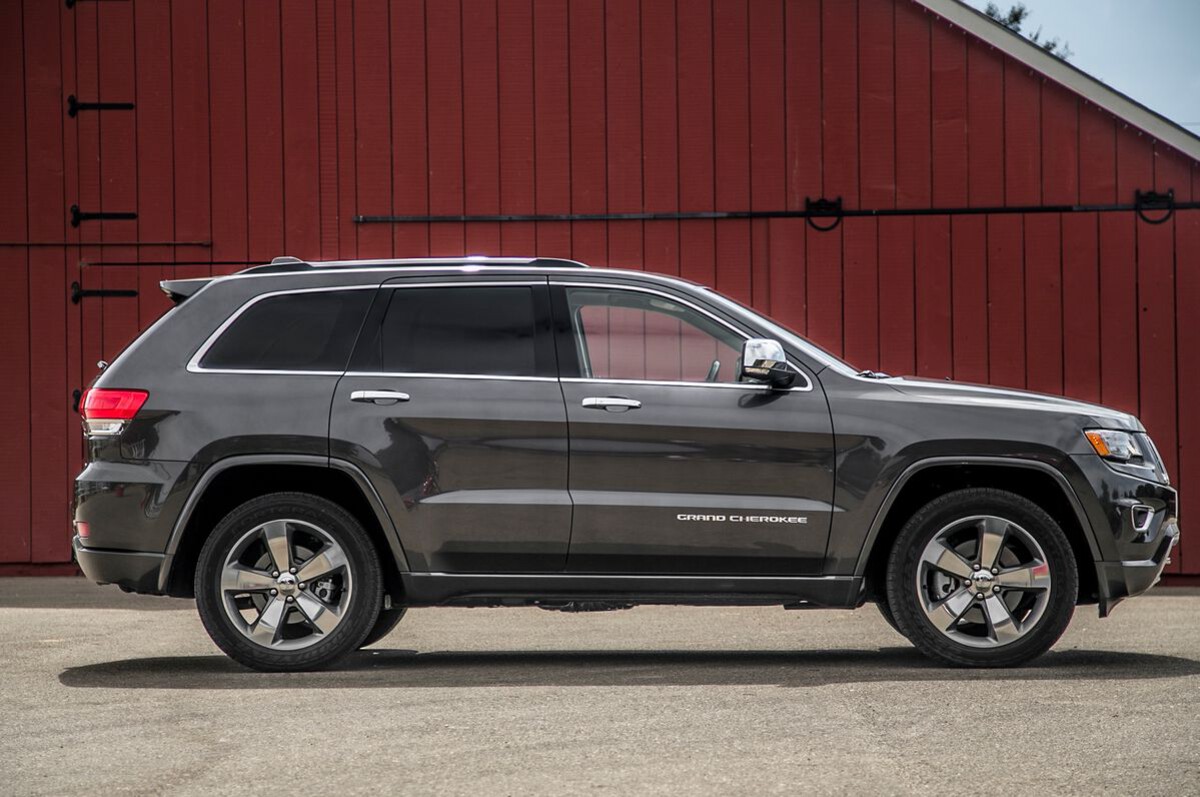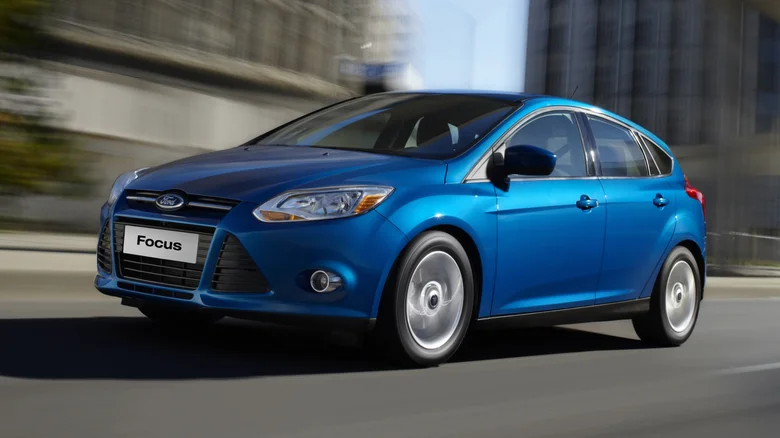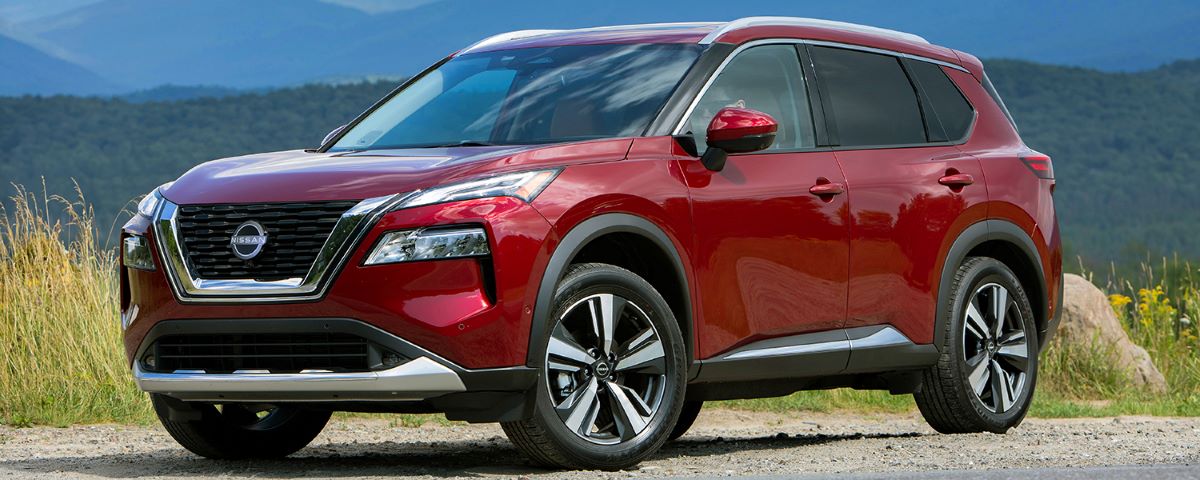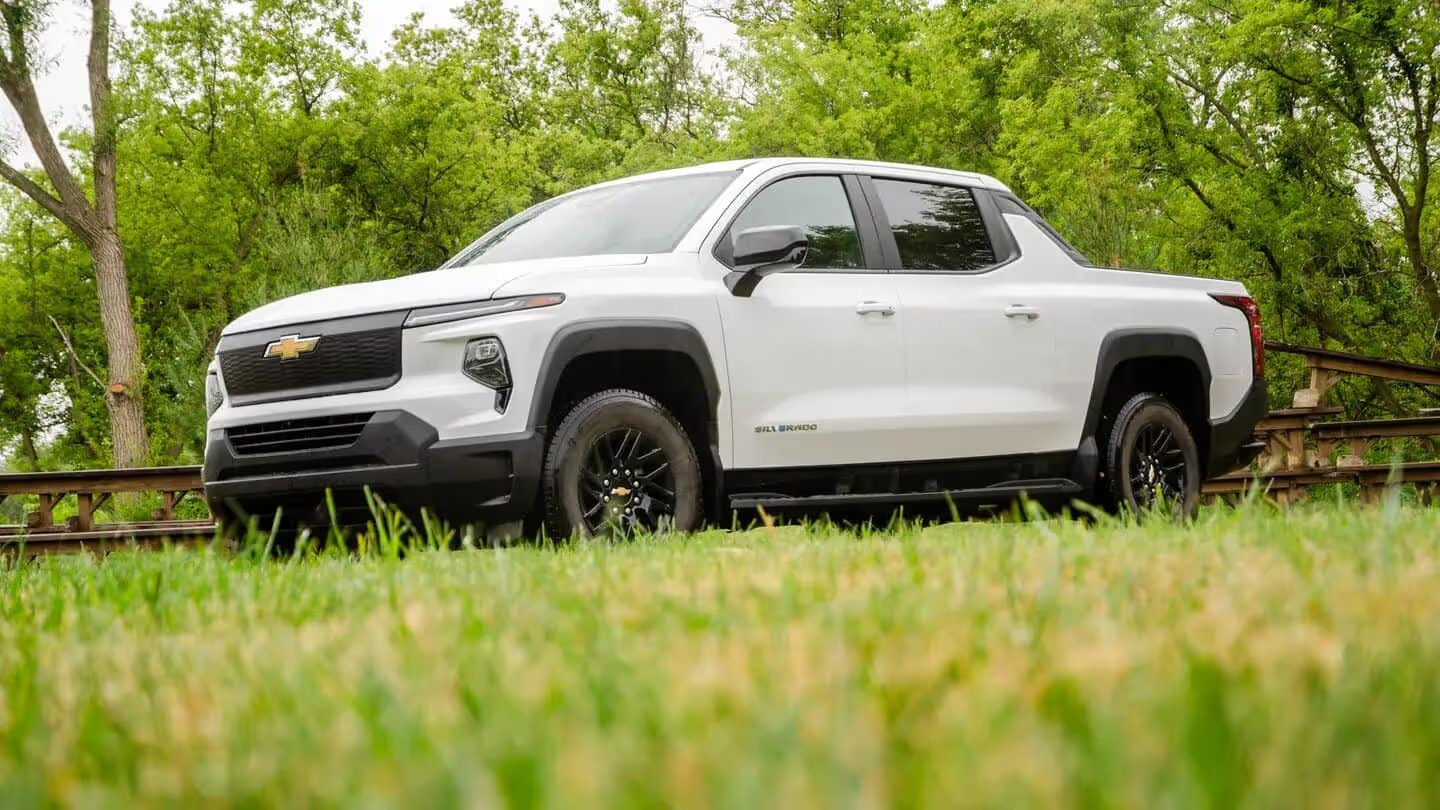Modern vehicles are marvels of engineering, blending mechanical prowess with sophisticated electronic systems designed to keep drivers informed, safe, and comfortable.
Among the most noticeable aspects of today’s automotive technology are the alert systems: the beeps, chimes, dashboard lights, and messages that warn drivers of everything from a loose seatbelt to potential engine trouble.
Ideally, these alerts should strike a perfect balance, catching the driver’s attention when truly necessary without becoming a source of annoyance or distraction. However, in practice, the quality and frequency of these warnings vary dramatically from one vehicle to another.
Some cars excel at delivering concise, meaningful alerts that enhance safety and convenience. They unobtrusively communicate only the necessary information, respecting the driver’s focus and patience.
These vehicles use technology intelligently to avoid “alert fatigue” — the phenomenon where drivers become desensitized or annoyed by constant or irrelevant warnings.
On the opposite end of the spectrum, there are models notorious for incessant beeping and nagging alerts that frustrate even the most patient owners. These systems can cause unnecessary stress, distract drivers, and ultimately reduce trust in the vehicle’s warning mechanisms.
Understanding this dichotomy is important because driver attention is a limited resource. In a complex environment such as traffic, overly frequent or irrelevant alerts can distract or desensitize a driver at critical moments, ironically reducing safety rather than improving it.
On the other hand, well-calibrated systems that communicate clearly and appropriately can enhance situational awareness, prompt timely maintenance, and prevent accidents.
The causes behind these differences are multifaceted. They stem from how automakers design, program, and calibrate sensors and alert algorithms, as well as how they prioritize user experience in their vehicles’ human-machine interfaces (HMI).
Engineering decisions about alert thresholds, volume, frequency, and presentation vary by manufacturer and model, reflecting different philosophies about driver interaction and safety.
Some brands prioritize a quiet, refined cabin environment and thus limit alerts to critical situations. Others, often to be overly cautious or due to less refined software, generate frequent warnings for minor issues or borderline conditions.
This article explores two contrasting groups of vehicles through the lens of their alert systems. First, we examine five cars that have earned praise for their smart, minimal, and helpful alert designs — vehicles that “never throw useless alerts.” These cars demonstrate that technology can be subtle, respectful, and still highly effective.
Next, we delve into five cars infamous for their persistent and often excessive beeping — those that “beep all day.” We will explore why their alert systems can be so frustrating, how this impacts driver experience, and the technical or design shortcomings behind the noise.
By shedding light on these extremes, this article aims to provide readers with a clearer understanding of how vehicle alert systems impact driving safety and comfort.
Whether you are shopping for a new car, struggling with alerts in your current vehicle, or simply curious about automotive technology, the insights here will help you appreciate the value of thoughtful alert design — and recognize the pitfalls of overzealous warning systems.
Also Read: 5 Cars That Still Feel Tight and Solid and 5 That Are Full of Play
5 Cars That Never Throw Useless Alerts (Expanded)

1. Toyota Camry (Recent Generations)
The Toyota Camry is a shining example of how automakers can balance technology and driver convenience in their alert systems. Across recent generations, especially post-2018 models, Toyota has refined its onboard alerts to ensure that drivers receive only relevant and necessary notifications.
This balance is not accidental but the result of deliberate design choices focused on reducing driver distraction while maintaining safety and reliability.
For instance, the Camry’s tire pressure monitoring system (TPMS) is engineered to avoid premature alerts from minor and temporary fluctuations that happen naturally due to temperature changes or road conditions. This prevents “false alarms” that often plague other vehicles, thereby reducing driver irritation.
The Camry’s multi-information display supplements audio alerts with detailed text and graphics, giving drivers the context they need to understand the issue. Instead of a vague beep or blinking light, the system provides clear messages such as “Check Engine Oil Level” or “Low Washer Fluid,” accompanied by an icon on the dashboard.
This clarity minimizes guesswork, letting drivers decide on the urgency of the issue without panic. In addition, Toyota’s alert sounds are thoughtfully calibrated—noticeable enough to catch attention but not so loud or repetitive as to startle or annoy. This creates a calm driving environment where alerts feel like helpful nudges rather than disruptive interruptions.
Mechanics appreciate the Camry’s approach as well. The error codes associated with alerts tend to be straightforward and accurate, leading to quicker diagnostics and fewer unnecessary repairs.
The vehicle’s electronic architecture adheres closely to industry standards like OBD-II, ensuring compatibility with a wide range of diagnostic tools. This transparency benefits both professional technicians and DIY enthusiasts, fostering trust between driver and vehicle.
The Camry’s ability to convey important alerts without overdoing it has contributed to its reputation for reliability and owner satisfaction. Another advantage of the Camry’s alert system is its integration with Toyota’s Safety Sense suite, which includes adaptive cruise control, lane departure alerts, and pre-collision systems.
These advanced features communicate warnings with precision, reserving audible alerts only for situations where driver intervention is critical. For example, lane departure warnings are subtle and non-intrusive, but become more urgent if the vehicle drifts without signaling.
This graduated alerting helps prevent alert fatigue by matching the urgency of the warning to the severity of the situation. Overall, Toyota’s commitment to smart, user-friendly alert systems in the Camry enhances safety without sacrificing comfort.

2. Honda Accord (10th Generation and Newer)
The Honda Accord, particularly from its 10th generation onward (2018+), has gained acclaim for its intelligently designed alert system that respects driver attention while ensuring safety. Honda’s philosophy centers on delivering alerts that are both meaningful and minimally disruptive.
Instead of flooding drivers with constant beeps for minor issues, the Accord’s system evaluates the context before issuing warnings. This prevents the type of “alert fatigue” that plagues many vehicles with overly sensitive sensors or poorly calibrated software.
One of the key strengths of the Accord’s alert system is its seamless integration with its multi-layered driver-assistance technologies. From collision mitigation braking to road departure mitigation, each system is designed to provide alerts that match the urgency of the situation.
The vehicle relies heavily on visual cues displayed on the instrument cluster or head-up display to convey information, minimizing the need for loud chimes. When sounds are necessary, such as during imminent collision warnings, they are brief but commanding, encouraging immediate driver response without overwhelming the senses.
Honda has also implemented adaptive alert thresholds that consider factors like vehicle speed, road type, and driving patterns. For example, lane-keeping assist alerts may be more sensitive on highways but less frequent in slow-moving city traffic where lane markings can be less distinct.
This nuanced approach allows the Accord to avoid unnecessary alerts while maintaining safety. The system also includes smart maintenance reminders that align closely with actual service needs rather than generic mileage intervals, preventing drivers from being bombarded with premature or irrelevant notifications.
Moreover, Honda’s comprehensive driver information system provides drivers with actionable insights alongside alerts. For example, if the tire pressure is low, the display will specify which tire requires attention and by how much the pressure has dropped.
This level of detail helps drivers make informed decisions without guesswork or multiple trips to the mechanic. Owners report that this clarity fosters trust and encourages prompt maintenance, contributing to the Accord’s strong reputation for reliability and ease of ownership.

3. Subaru Outback (Recent Models)
Subaru’s Outback, especially models from the last several years, exemplifies how a rugged, safety-focused vehicle can deliver clear and relevant alerts without overwhelming the driver.
The Outback’s EyeSight safety system—a comprehensive suite that includes adaptive cruise control, lane keep assist, and pre-collision braking—is paired with an alert architecture that prioritizes meaningful communication over noise.
The system uses a blend of visual icons, dashboard messages, and subtle chimes to inform drivers of potential hazards or maintenance needs.
A key feature of the Outback’s alert system is its resistance to generating false or repetitive alerts. This is particularly important given the vehicle’s frequent use in varying weather and terrain conditions, which can otherwise cause sensor fluctuations.
Subaru engineers have calibrated systems such as the TPMS and traction control to differentiate between transient anomalies and genuine issues. As a result, drivers experience fewer unnecessary warnings, contributing to a calmer and more focused driving experience.
In terms of maintenance alerts, Subaru’s system is closely aligned with real-time vehicle health rather than rigid schedules. This “condition-based” maintenance approach helps ensure that alerts occur only when service is truly required, reducing alert fatigue.
The system provides clear instructions through the multi-function display, guiding owners on the next steps rather than just signaling a generic warning. The combination of Subaru’s emphasis on safety and driver convenience has earned the Outback a loyal following, with many praising its thoughtful balance of alertness and discretion.
Mechanics and owners alike benefit from the transparency of the Outback’s error codes. The system adheres to industry diagnostic standards while providing proprietary insights when necessary. This makes troubleshooting more straightforward and reduces time wasted chasing ambiguous or misleading alerts.
Overall, Subaru’s approach reflects a deep understanding of driver psychology and vehicle usage patterns, leading to alert systems that are both reliable and respectful of driver attention.

4. Mazda CX-5 (Second Generation)
Mazda’s CX-5, particularly its second generation released around 2017, has been widely recognized for its elegant combination of driving dynamics and user-friendly technology.
Its alert system stands out for being purposeful and restrained, designed to provide essential information without distracting the driver. Mazda’s Human-Machine Interface (HMI) emphasizes clarity and subtlety, using visual cues on the instrument panel to complement auditory alerts.
The CX-5’s design philosophy revolves around reducing unnecessary noise. When a warning is triggered, such as a low fuel alert or maintenance reminder, the vehicle provides a brief, low-volume beep coupled with a detailed message on the multi-information display.
This allows drivers to acknowledge the alert without feeling startled or annoyed. For safety-related notifications like blind-spot monitoring or lane departure warnings, the system employs gentle tones and tactile feedback through the steering wheel in some trims, helping communicate alerts in multiple ways while avoiding excessive noise.
An important aspect of Mazda’s alert system is the prioritization of messages. Critical alerts are given immediate attention with clear signals, while less urgent reminders are delivered in a way that minimizes disruption. For example, reminders for oil changes or tire rotations will appear at appropriate intervals and won’t repeat excessively if ignored.
The system’s sophistication extends to its ability to distinguish between real faults and temporary sensor anomalies, helping prevent false alarms and repetitive beeping.
Owners of the CX-5 often comment on how the alert system complements the vehicle’s overall driving experience, which is known for being refined and driver-focused.
By maintaining a calm cabin environment and reducing sensory overload, Mazda enables drivers to stay engaged and alert to truly important information. This thoughtful approach enhances both safety and comfort, contributing to the CX-5’s strong appeal in the competitive crossover market.

5. Tesla Model 3
Tesla’s Model 3 takes a distinctly modern approach to vehicle alerts, relying heavily on its advanced software platform and minimalist interior design.
Unlike traditional vehicles that use numerous physical buttons and gauges, the Model 3 centralizes information on a large touchscreen, which serves as the primary interface for warnings and notifications. This digital-first approach allows Tesla to present alerts in a clear, context-rich format that avoids ambiguity.
Tesla’s alert system is calibrated to minimize unnecessary auditory alarms. Most warnings are communicated visually through the touchscreen, which displays detailed information about the nature and severity of the issue.
Audible alerts are reserved for urgent situations that require immediate driver attention, such as Autopilot disengagement or collision warnings. This selective use of sound helps prevent “alert fatigue” and keeps the cabin environment serene, aligning with Tesla’s minimalist design ethos.
One of the unique advantages Tesla offers is over-the-air software updates, which enable continuous refinement of alert thresholds and behaviors based on real-world data and user feedback.
Early adopters of the Model 3 noted occasional issues with persistent alerts, but subsequent updates have optimized the system to reduce false alarms and repetitive beeping. This adaptive capability sets Tesla apart from traditional automakers, allowing it to improve alert systems post-sale and tailor experiences to driver preferences.
Additionally, Tesla provides customization options that let drivers adjust the volume or disable certain warnings, offering greater control over the alert experience.
Combined with its advanced driver-assistance features, the Model 3 delivers a driver notification system that is intelligent, respectful, and user-centric. This approach enhances both safety and comfort, making the Model 3 a leader in the next generation of vehicle alert technology.
5 Cars That Beep All Day

1. Jeep Grand Cherokee (Early 2010s Models)
The Jeep Grand Cherokee models from the early 2010s have earned a reputation for an alert system that can feel excessively intrusive and, quite frankly, exhausting for drivers. Owners frequently complain about the constant barrage of beeps triggered by relatively minor or transient issues, turning what should be a quiet, enjoyable ride into a persistent cacophony.
A common complaint involves the seatbelt alert system, which sometimes continues to sound even when the seatbelt is loosely buckled or if a heavy object is placed on the passenger seat. This causes the alarm to trigger repeatedly, forcing drivers to fumble with seatbelts just to silence the noise.
Beyond seatbelt warnings, the Grand Cherokee’s low fuel alert system often sounds well before most drivers consider the fuel level to be critically low. This premature and persistent reminder beeps at irregular intervals, creating an atmosphere of anxiety rather than helpfulness.
The vehicle’s stability control and tire pressure monitoring systems are also notorious for being overly sensitive. In some cases, drivers experience frequent alerts related to traction or pressure drops caused simply by normal driving on uneven roads or temperature changes, which ideally should not be flagged as urgent issues.
Mechanics also report challenges related to the Grand Cherokee’s alert systems. Faulty sensors, sometimes exacerbated by aging wiring harnesses, trigger false alarms that are difficult to diagnose and eliminate. This leads to drivers being bombarded with warnings that may not indicate actual mechanical or safety problems.
Compounding the frustration is the limited ability of the vehicle to let drivers easily silence or customize these alerts. The cumulative effect is a system that frequently interrupts driving, causing some owners to develop a habit of ignoring or disabling alerts entirely, thus defeating the safety purpose of these warnings.

2. Ford Focus (2012–2014 Models)
The Ford Focus models from 2012 through 2014 are infamous among owners for their overly aggressive and often unnecessary alert systems, which many describe as an endless stream of beeping.
One of the most common sources of irritation is the parking sensor system, which tends to activate continuously even when there are no actual obstacles nearby.
Drivers report scenarios where the sensors misinterpret harmless objects or even just environmental factors like rain or dirt as hazards, triggering constant audio warnings that are difficult to silence without putting the car in reverse or turning off the sensors manually.
Additionally, the Focus is known for its persistent seatbelt chimes, door ajar warnings, and headlight reminders, all of which can sometimes come in quick succession or even overlap, creating a confusing and noisy experience for the driver.
The car’s software appears to lack the sophisticated filtering required to prioritize or combine alerts effectively. Instead, every minor condition is given its distinct alarm, overwhelming the driver with redundant signals.
From a technical standpoint, Ford’s diagnostic and electronic control units in these Focus models have been known to occasionally generate false or phantom alerts due to sensor miscalibration or software glitches. These false alerts lead to unnecessary service visits and, more importantly, create a sense of distrust in the vehicle’s warning systems.
Owners have reported that the only reliable way to manage the constant noise is to lower the alert volume manually or to attempt to deactivate some warnings, but these options are limited and not always effective. This barrage of persistent beeping detracts significantly from the Focus’s otherwise sporty and enjoyable driving dynamics.

3. Nissan Rogue (2014–2016)
The Nissan Rogue, particularly from the 2014 to 2016 model years, has earned a reputation for an overly sensitive alert system that frequently irritates drivers with constant beeps.
Among the most persistent complaints are the tire pressure monitoring system (TPMS) alerts, which often sound repeatedly even after tires have been checked and properly inflated.
This behavior typically results from the system’s low threshold for detecting pressure variances and an apparent lag in recalibrating after inflation. Drivers are forced to endure repeated warnings despite there being no actual risk, which diminishes trust in the system.
Moreover, Nissan’s collision warning alerts can be triggered inappropriately during typical driving situations, such as navigating narrow city streets, tight turns, or stop-and-go traffic. These false alarms cause the vehicle to beep unexpectedly, startling the driver and potentially causing more distraction than the alert is intended to prevent.
The Rogue’s lane departure warning system also shares a similar sensitivity problem, issuing chimes in conditions where lane markings are faded or unclear, a common issue in many urban and rural environments.
The system’s inability to effectively filter out these non-critical alerts results in what owners describe as “alert fatigue.” Over time, drivers may begin to ignore or mute alerts, raising safety concerns.
Unfortunately, the Rogue’s software does not offer significant customization options to adjust alert sensitivity or volume, leaving many owners stuck with a system that “beeps all day.” This frequent and often unnecessary noise detracts from the Rogue’s otherwise practical design and reliable reputation.

4. Chevrolet Silverado (2007–2013 Models)
The Chevrolet Silverado pickups from model years between 2007 and 2013 are well known for their persistent and often annoying alert sounds, which can significantly impact the driving experience.
These trucks frequently issue seatbelt chimes that continue unabated until the driver or passengers comply, often sounding multiple times before and during the journey.
Additionally, door ajar warnings and low fuel alerts are notoriously sensitive, activating when doors are not fully closed or when the fuel gauge shows more than a quarter tank remaining.
The Silverado’s alert system does not typically allow drivers to customize or disable these chimes, leading to frustration, especially during short trips or work-related driving, where the noise can become repetitive and distracting.
The seatbelt warning, in particular, is known to be unforgiving—beeping loudly and often even if the seatbelt is only slightly unbuckled or if a passenger is seated without buckling properly. This can make cabin life stressful, especially for those who frequently have multiple passengers or cargo in the rear seats.
From a technical perspective, many of these Silverado models experience wiring and sensor degradation over time, which increases the frequency of false alerts. Faulty door switches, for example, may trigger the door ajar warning even if the door is securely closed, while aging fuel sensors may cause premature low fuel alarms.
The sheer volume and frequency of these alerts often cause drivers to disregard the warnings or seek aftermarket solutions to mute the beeping, undermining safety protocols. Thus, the Silverado of this era is a prime example of how overly sensitive and inflexible alert systems can reduce driver satisfaction.

5. Volkswagen Golf Mk7 (2013–2019)
The Volkswagen Golf Mk7, produced from 2013 through 2019, combines sporty driving and a premium feel but has a somewhat problematic alert system known to “beep all day.”
Owners have reported that the vehicle’s parking sensors frequently produce false alarms in tight urban settings or parking garages, sounding warnings even when no obstacles pose immediate risks. This over-sensitivity makes parking maneuvers stressful rather than helpful, forcing drivers to rely on their judgment rather than the alerts.
In addition, the Golf’s advanced driver assistance systems, including lane departure warnings and adaptive cruise control, can generate multiple simultaneous alerts. These alerts sometimes overlap, resulting in a confusing barrage of beeps and visual signals.
Because the alert volume tends to be loud and difficult to reduce through the vehicle’s settings, the cumulative effect can feel intrusive, especially during longer drives or in congested traffic where the systems are frequently activated.
Another source of irritation is the Golf’s low fuel and maintenance reminders, which some drivers find premature or repetitive. The vehicle’s system lacks sufficient filtering or adaptive delay mechanisms to prevent multiple beeps for the same issue within a short period.
Furthermore, some owners report that the Golf’s alert system occasionally issues false positives due to sensor misreads or software quirks, exacerbating the feeling of nagging.
Despite Volkswagen’s overall strong reputation for quality and driving dynamics, the Mk7’s alert system is often cited as a drawback. Drivers who value a calm cabin environment may find themselves frustrated by the seemingly endless series of beeps, reducing enjoyment and trust in the vehicle’s warning systems.
In some cases, drivers resort to technical fixes or dealer interventions to recalibrate sensors or mute certain alerts, though these solutions are rarely perfect or permanent.
Also Read: 5 Cars That People Still Love After 10 Years and 5 They Wish They Sold
The experience of hearing a car beep can range from reassuring to maddening, depending on how well the alert system is designed and implemented.
The difference between vehicles that issue useful, targeted alerts and those that “beep all day” underscores a critical aspect of modern automotive technology: the balance between safety communication and driver comfort.
As this article has explored, this balance is far from universal, and the consequences for driver experience and safety are profound.
Cars that “never throw useless alerts” exemplify how thoughtful engineering and user-centric design can create alert systems that enhance safety without becoming a source of irritation.
Vehicles like the Toyota Camry, Honda Accord, Subaru Outback, Mazda CX-5, and Tesla Model 3 showcase how alerts should be purposeful, clear, and well-timed.
These systems use a combination of visual, auditory, and sometimes tactile feedback to communicate important information without overwhelming the driver. They incorporate smart filtering algorithms that minimize false alarms, preventing alert fatigue and helping drivers focus on what truly matters.
Moreover, these vehicles often allow some degree of customization or adaptive alerting based on driving conditions, which further personalizes the experience and improves the signal-to-noise ratio. Their alert systems are integrated into broader vehicle safety ecosystems, where warnings are calibrated to escalate appropriately as risk increases.
This thoughtful approach not only improves owner satisfaction but also supports safer driving behaviors and timely maintenance, contributing to the vehicle’s overall reliability and longevity.
In stark contrast, the cars that “beep all day” reveal the pitfalls of overly sensitive or poorly designed alert systems. Models such as early 2010s Jeep Grand Cherokee, 2012–2014 Ford Focus, 2014–2016 Nissan Rogue, 2007–2013 Chevrolet Silverado, and Volkswagen Golf Mk7 suffer from frequent false alarms, premature warnings, and a lack of alert customization.
These flaws lead to incessant beeping, which can frustrate drivers, cause distraction, and ultimately erode trust in the vehicle’s warning systems.
Persistent alerts, especially when they are inaccurate or irrelevant, contribute to “alert fatigue,” where drivers begin to ignore or disable warnings altogether, undermining safety efforts. The root causes range from hardware sensor sensitivities to software calibration issues, but the effect is the same: a noisy, disruptive driving environment.
This can detract significantly from the driving experience and even reduce the perceived value of an otherwise capable and popular vehicle.
Looking forward, the evolution of vehicle alert systems will likely focus increasingly on intelligent filtering, driver customization, and integration with broader connected vehicle and autonomous driving technologies.
Over-the-air software updates—as seen with Tesla and some other automakers—offer promising avenues to refine alert thresholds and user interfaces after vehicles have left the factory. This adaptability is key to addressing the diverse needs and preferences of drivers while maintaining safety standards.
For consumers, understanding how different vehicles handle alerts can inform purchase decisions and ownership experiences. Those who value a calm, focused driving environment should prioritize vehicles with reputations for smart, minimal alerting systems.
Meanwhile, potential buyers should be wary of models known for excessive beeping, especially if they frequently encounter nuisance warnings that could detract from everyday driving enjoyment.
In sum, the contrast between cars that never throw useless alerts and those that beep all day is a microcosm of the broader challenge in automotive design: balancing cutting-edge technology with human factors.
Striking this balance successfully enhances safety, reduces driver stress, and improves overall satisfaction. As technology continues to advance, the goal should be clear: alert drivers effectively but respectfully, ensuring that every beep counts and every warning helps.

